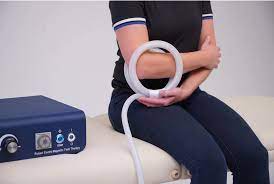In the ever-evolving landscape of healthcare, buy pemf device architects are playing a unique and crucial role in shaping the future of medical devices. Traditionally associated with designing buildings and spaces, architects are now applying their innovative thinking to the development of medical devices that promise to revolutionize patient care, enhance medical workflows, and contribute to overall advancements in healthcare technology.
The Fusion of Design and Medicine:
Architects bring a fresh perspective to the medical device industry by merging principles of design, functionality, and aesthetics. The result is a new wave of medical devices that not only meet the highest standards of performance but also prioritize user experience and integration into healthcare environments.
Design Thinking in Medical Devices:
Architects are applying design thinking methodologies to the development of medical devices, ensuring a user-centric approach. This involves understanding the needs of healthcare professionals, patients, and other stakeholders to create devices that seamlessly fit into existing healthcare systems.
One notable example is the design of infusion pumps. Traditionally, these devices were functional but lacked an intuitive interface. Architect-designed infusion pumps focus on user experience, incorporating touchscreens, simplified controls, and ergonomic designs to improve usability and reduce the risk of errors in administering medications.
Integrating Devices into Healing Spaces:
Architects are not only designing medical devices but also considering how these devices integrate into healing environments. From patient rooms to operating theaters, the design of medical devices is now aligned with the overall architectural vision of healthcare facilities.
For instance, architects are collaborating with medical equipment manufacturers to design surgical robots that seamlessly integrate into operating room layouts. These robots are not only cutting-edge in terms of technology but are also designed to enhance the overall aesthetic and functionality of the surgical space.
Smart and Connected Devices:
The advent of the Internet of Things (IoT) has opened up new possibilities for architects in the medical device realm. Architects are leveraging their expertise in creating smart, connected spaces to design medical devices that can collect and transmit data for real-time monitoring and analysis.
This connectivity enhances the efficiency of healthcare delivery and allows for remote monitoring of patients. For instance, architects are involved in designing wearable devices. That monitor vital signs and send real-time data to healthcare providers, enabling proactive and personalized care.
Challenges and Considerations:
While the involvement of architects in medical device design brings numerous benefits, it also poses challenges. Collaboration between architects, healthcare professionals, engineers, and manufacturers is essential to ensure. That the designed devices meet medical standards, are safe, and are practical in clinical settings.
Additionally, architects need to navigate the complex regulatory landscape of the healthcare industry. Understanding the unique challenges associated with buy pemf device device approval and adoption.
Conclusion:
The collaboration between architects and the medical device industry is a testament to the interdisciplinary nature of innovation. Architect-designed medical devices not only showcase advancements in technology. But also reflect a commitment to improving the overall experience of patients and healthcare professionals. As architects continue to lend their creativity and expertise to healthcare, the future promises a harmonious. Blend of design and medicine that will undoubtedly shape the next generation of medical devices.




